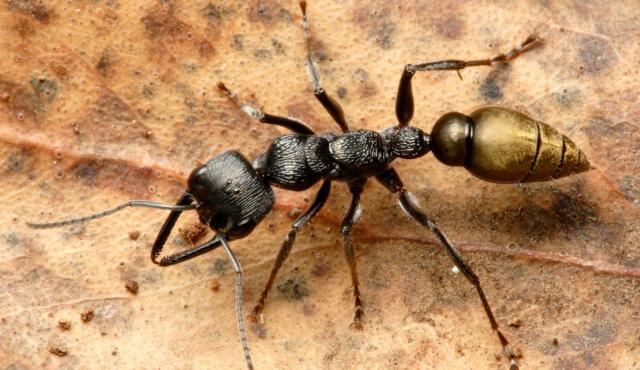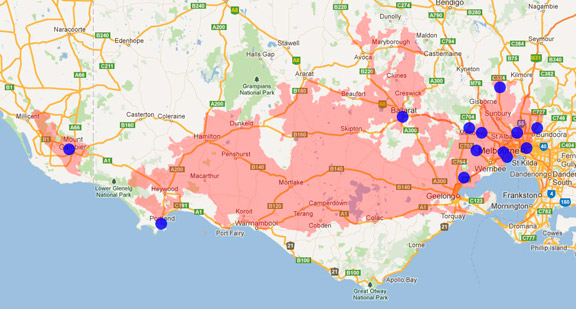A range of teacher professional learning programs will be developed to accompany the Biodiversity of the Western Volcanic Plains online outreach...

Golden-tailed Bullant
Myrmecia piliventris
Bullants have very good vision and can be aggressive. Their nests are mound-shaped, with cleared areas around the entrance holes, and can extend several metres below ground. Bullants catch entire insects to feed to their larvae.
| Details | Description |
| Type | Invertebrate |
| Group | Insect - Ant |
| Identifying Characteristics | |
| Distinctive Markings | Large jaws (mandibles) and eyes. |
| Diet | Omnivore. Eats nectar and other plant juices as well as those from insects. Also catches animal prey. |
| Habitat | Makes an underground nest in urban areas, heathlands, forests and woodlands. |
| Native Status | Native to Australia |
| Bites/Sting | They can sting if disturbed, sometimes causing an allergic reaction. They deliver painful stings by gripping the intruder with their jaws, curling their abdomen with its sting and injecting the victim with venom. Often multiple stings are delivered. |
| Taxonomy | |
| Phylum | Arthropoda |
| Class | Insecta |
| Order | Hymenoptera |
| Family | Formicidae |
| Genus | Myrmecia |
| Species | piliventris |

Distribution maps indicate current and historic locations where species have been sighted.
Source: Atlas of Living Australia
| Conservation Status | |
| DEPI Advisory List | Not listed |
| FFG Act | Not listed |
| EPBC Act | Not listed |
The conservation status of species is listed within Victoria and Australia.
The Department of Environment and Primary Industry (DEPI) Advisory List consists of non-statutory advisory lists of rare or threatened flora and fauna within Victoria.
The Flora and Fauna Guarantee Act 1988 (FFG Act) lists threatened species in Victoria. Under the Act, an Action Statement is produced for each listed species.
The Environment Protection and Biodiversity Conservation Act 1999 (EPBC Act) is the Australian Government’s key piece of environmental legislation, listing nationally threatened native species and ecological communities.



